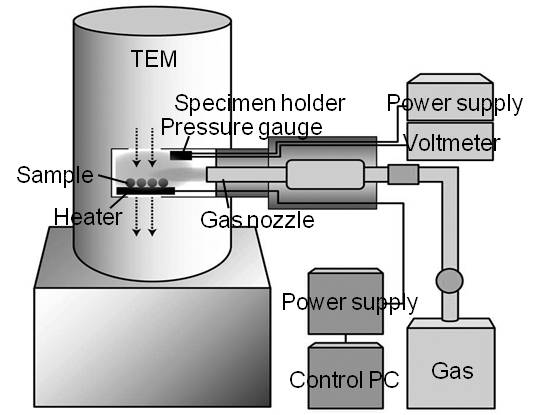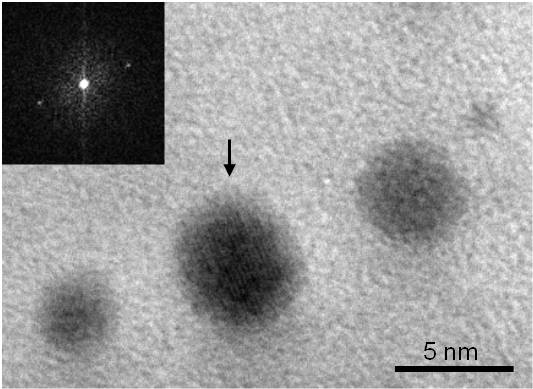IT-6-P-1815 Development of a TEM specimen holder system for catalytic materials
Catalytic materials are often used as particles dispersed on a support material. Reduction of their size to nanoparticles, clusters and atoms is crucial for improving their performance. Transmission electron microscopy (TEM) is an indispensable tool for characterization of catalyst nanoparticles. However, the observation environment in general TEM differs significantly from those in actual applications. In this study, we developed a TEM specimen holder system for in situ observation of catalytic materials.
Figure 1 shows a schematic of the developed system. The specimen holder includes a heater, a gas nozzle for introducing gases to the specimen, and a gauge for measuring pressure near the specimen. Orifice plates are arranged above and below the specimen to create differential vacuum.
Figure 2 shows a TEM image and a fast Fourier transform (FFT) pattern of Pt nanoparticles on an amorphous carbon film taken in 0.5 Pa vacuum at room temperature, i.e., under gas-phase TEM conditions. The used microscope was JEM-2100 (JEOL, Japan), operating at an accelerating voltage of 200 kV. Lattice fringes of the Pt nanoparticle were observed, as indicated by the arrow in the TEM image and by the satellite spots in the FFT pattern (inset). These results demonstrate that the developed specimen holder system is compatible with high-resolution imaging in low vacuum. We have applied this holder system to study the movement of Pt nanoparticles on carbon materials in a gas atmosphere at high temperatures.
This work was partly supported by the Japan Society for the Promotion of Science, Grant-in-Aid for Scientific Research and Center of Materials Research for Low Carbon Emission.

Fig. 1: A schematic of the developed specimen holder system. |

Fig. 2: TEM image and FFT pattern of Pt nanoparticles on an amorphous carbon film taken under 0.5 Pa air at room temperature. |